This is the third in a series of three blogs relating to absent lateral incisors.
When lateral incisors are missing if active orthodontic treatment is considered , there are essentially two broad treatment options (not listed in order of merit- there are relative indications and contra-indications for each approach , so the approach is determined by a combination of the presenting features of the patient and their personal preference. )
(1) To reopen the space of the missing tooth (lateral incisor) using orthodontics, and to subsequently restore the resulting space with either a bridge or an implant. “Missing lateral incisors Part 2. “The re-opening the space option.” This was the subject of the second blog of this series
OR
(2) To close the space of the absent tooth using orthodontics , and to reshape the third tooth (the canine) so that it looks more like a second tooth (lateral incisor) canine substitution. “Missing lateral incisors Part 3. “The closing the space option.” This is the subject of this blog.
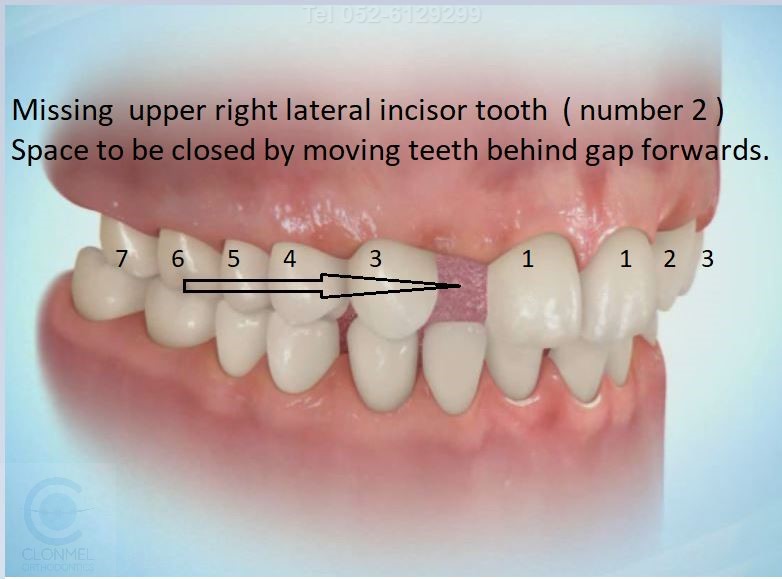
Prior to space Closure.
To close the space orthodontically normally involves the use of fixed appliances (braces ) as bodily movement of the teeth is required. That is, it is important that both the root and the crown of the teeth are moved forwards into the space. Clear aligners (e.g. Spark or Invisalign) may well not achieve this demanding bodily type of tooth movement, that is, they may struggle to move the root of tooth 3 into the position of tooth 2. This may unfortunately achieve a “sub-optimal” result.
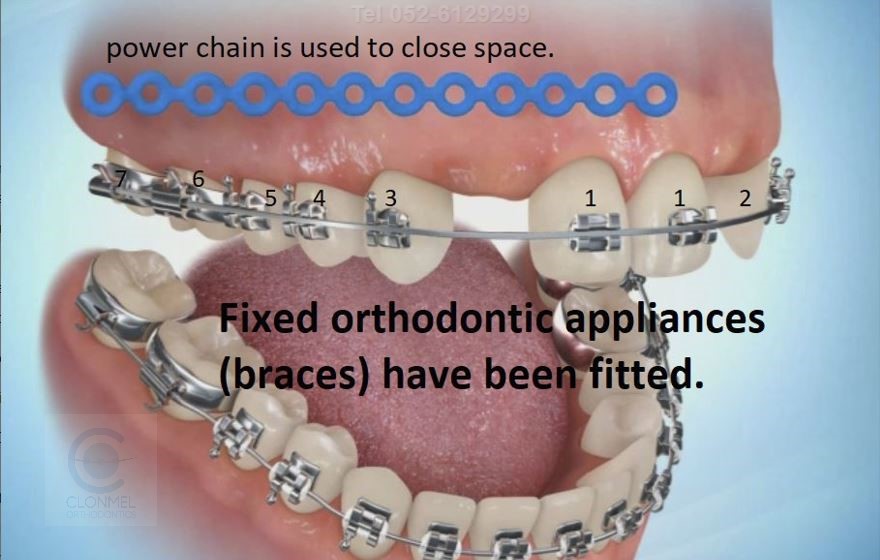
Fixed appliances and power chain to close space.
Stretched power chain is used to move the upper back teeth forwards to close the gap where the lateral incisor ( tooth 2) is absent.
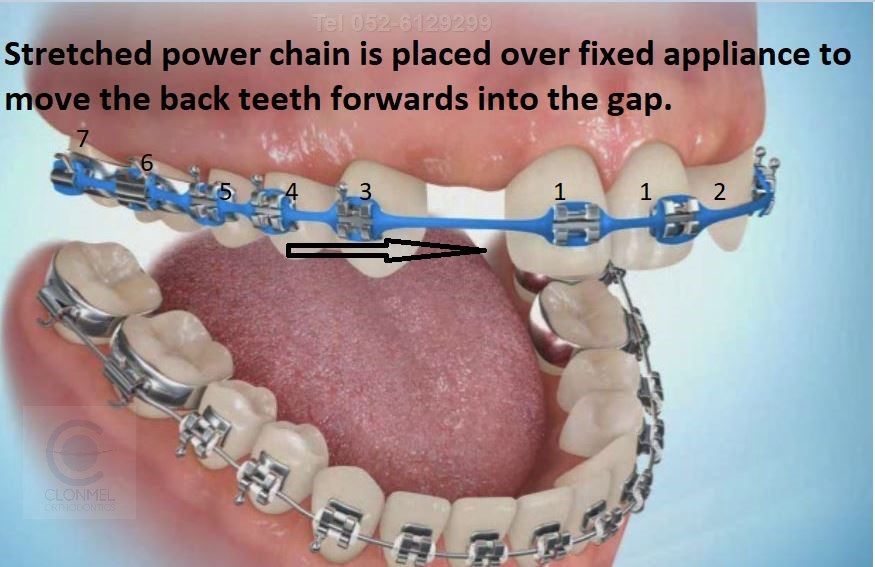
Stretched powerchain is closing the space of the missing lateral incisor.
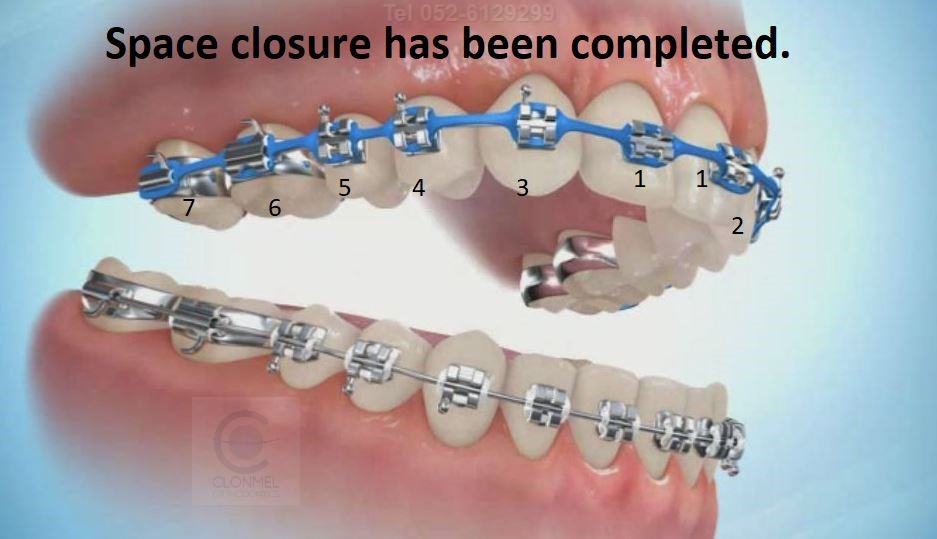
Space closure has been completed. Tooth 3 is now in the position of tooth 2.
Space closure has been completed each tooth has moved forwards by 1 tooth into the gap.
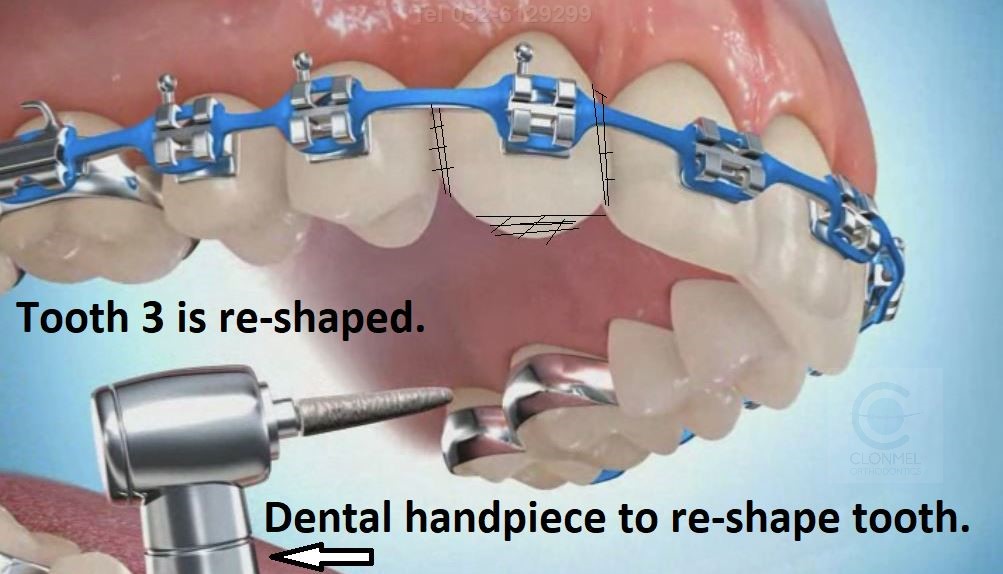
Tooth 3 the canine which has a pointed shape is reshaped to have the shape of a lateral incisor, which has a more rectangular shape.
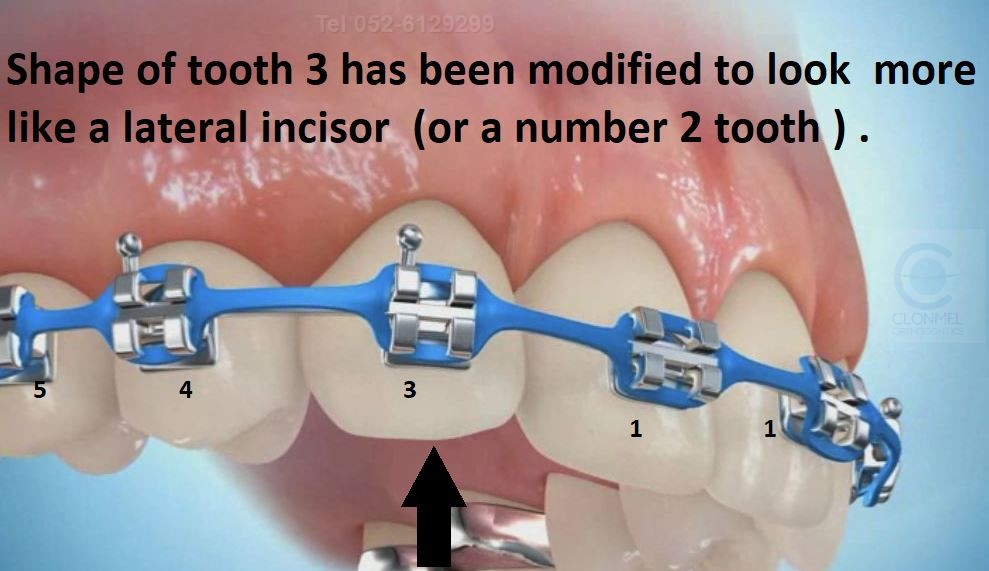
The appearance of the canine (tooth 3) is now more like a lateral incisor tooth 2.
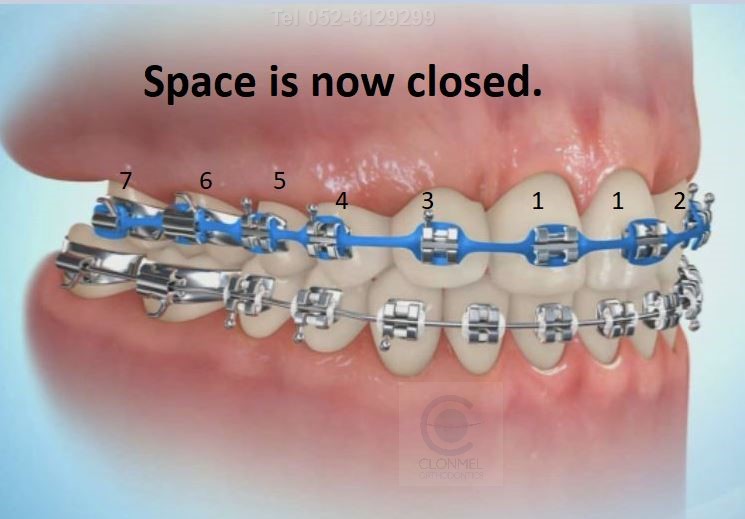
This concludes blog 3 which describes the option of closing the gap of an absent lateral incisor by substituting the canine ( tooth3) into the position of the lateral incisor (tooth2), and re-shaping the canine so that it looks more like a lateral incisor.
Both the options of opening the space and fitting a bridge or an implant (as described in the second blog of this series), and the option of closing the space as described above have various indications and contra-indications, which along with the patients preference determine the most appropriate treatment in their case. It is important that the correct orthodontic appliance is used if an optimal result is to be achieved.
……………………………………………………………………………………………………………………………………………………………………………………………
This orthodontic blog was written by Dr John Buckley, Clonmel’s most qualified and most experienced Orthodontist.
…………………………………………………………………………………………………………………………………………………………………………………………….
